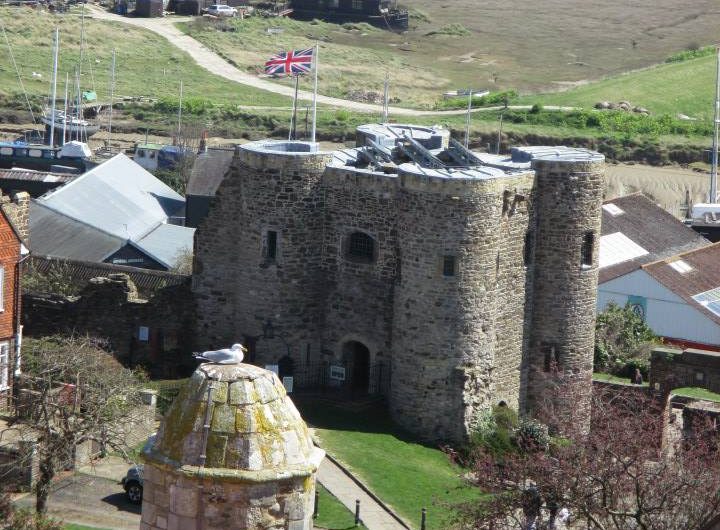A walk back through time
When I heard that Paul Goring, our town crier, had started his regular historical walking tours through the citadel, I determined to go to the very first one. I had seen him, surrounded by crowds of people over the autumn and the snippets of information I had heard as I had walked very slowly past, had whetted my appetite for more.
We met at the heritage centre and set off immediately for the quay. Paul told us that in its heyday, 350 ships could dock at what is now Strand Quay. A naval battle was even fought there, between the entire British fleet and the Spanish. It was difficult to imagine that, given the size of the river now, but Paul explained how a great storm had diverted the course of the Rother so that instead of disgorging at New Romney, it now deposited at Rye, causing the harbour to silt up.
The tour lasted two hours and covered a huge amount of ground. One of the things I found most fascinating was that in the eighteenth century, many of the medieval houses of Church Square, were given false fronts as the half timbered style was deemed old fashioned. Now we look at the beautiful St Anthony on the corner of Church Square and Watchbell St and the casual observer thinks it is one of a kind. But in fact most of the houses along that side of the square are exactly the same, just with new(ish) facades. Paul showed us that what looked like a red brick wall was in fact very narrow tiles. Underneath they look like St Anthony.
It was similar around Hucksteps Row, which used to be the slums of Rye, with a notorious pub, the Jolly Sailor, which closed in the early twentieth century. Prostitution and drunken fighting were the norm in this area – impossible to imagine now. Because it was a relatively poor area, many of the occupants couldn’t afford to have their houses refaced, which is why there are quite a few half-timbered houses in their original state in that particular square.
Paul also pointed out the link between the beautiful private home St Anthony and the Catholic church, St Anthony of Padua on Watchbell Street. For some reason, I had never connected the two. It turns out that the Maltese Duke who restored St Anthony at the beginning of the 20th century (it had been converted into tenements and bedsits – anathema!) also paid for the construction of the church and named both of them after his patron saint.
I have been on several guided tours of Rye, all of them excellent, but Paul was able to show us something I had never seen before. As town crier, Paul has the entrée into the black museum at the top of the town hall. As well as the current mayor and councillors’ robes, the top room has a more sinister exhibit. This is the gibbet and skull of the famous murderer of Rye, John Breads. The full story can be read on Rye Museum’s website https://www.ryemuseum.co.uk/our-newest-ypres-tower-exhibit/.
We progressed to Ypres Castle – one of the people on the tour was amazingly born in Ypres, Belgium – and Paul told us about the grisly torture techniques that were used there.
There was so much more that Paul covered – ghosts, smugglers and of course the world’s most famous pirates as well as many other historical buildings and features.
It was a fascinating couple of hours – I highly recommend both visitors and locals to go along. I learned a lot and I will be going back for more.
The walk dates for April are as follows:
- Wednesday April 17, 11am
- Friday April 19, 11am
- Sunday April 21, 11am
- Monday April 22, 11am
- Thursday April 25, 11am
- Friday April 26, 11am
- Plus – Spooky Ghost Walk of Rye – Saturday April 20, 6pm
All walks start from Rye Heritage Centre on Strand Quay and cost £10 per person. (accompanied under-14’s free). No advance booking is necessary
Image Credits: J. Minter .



